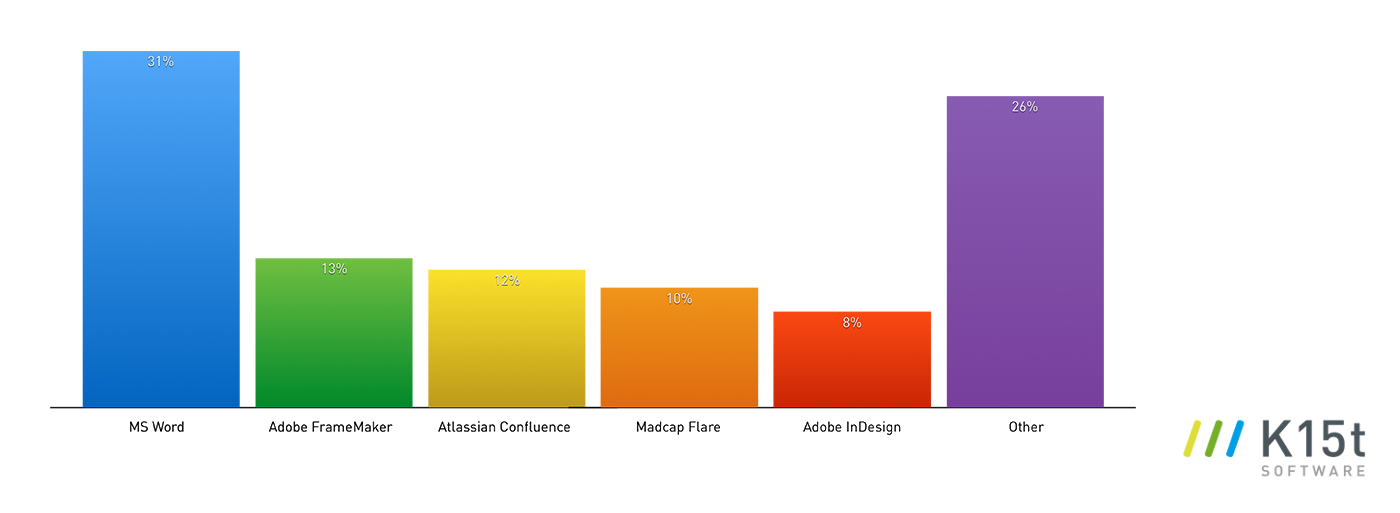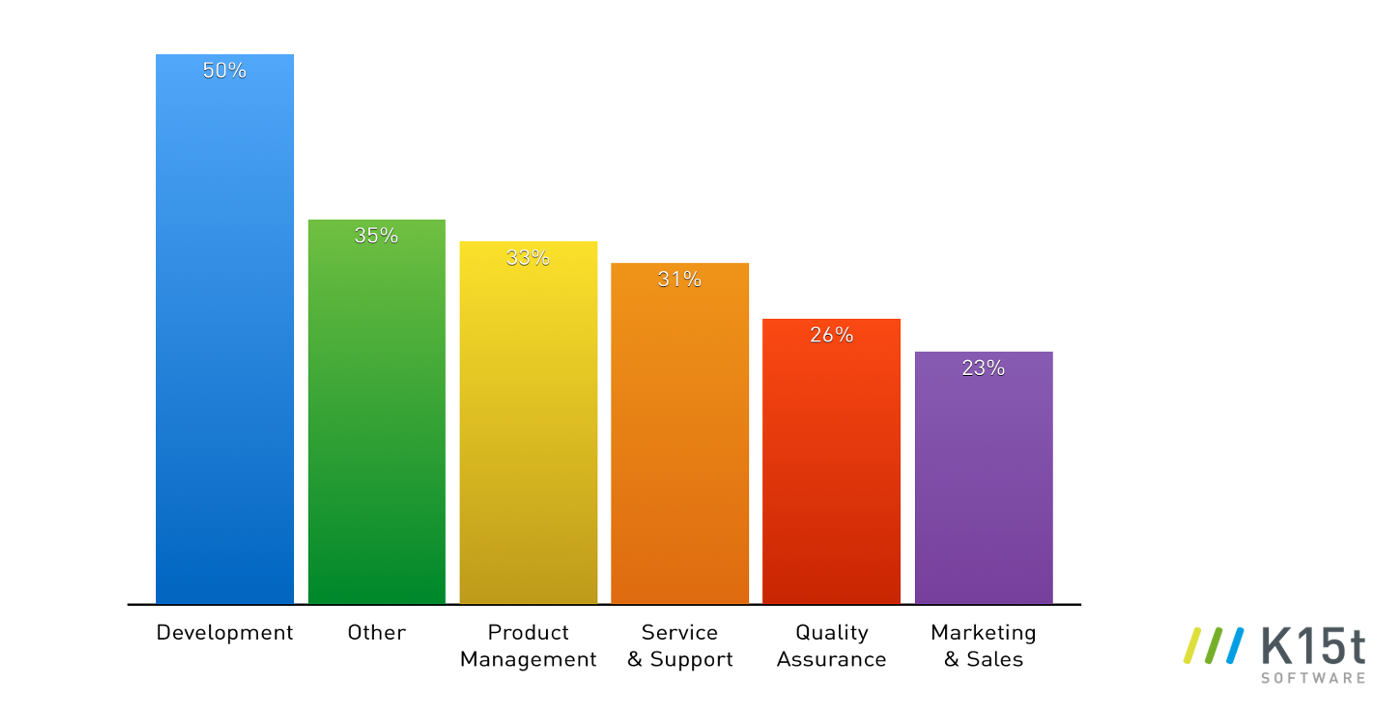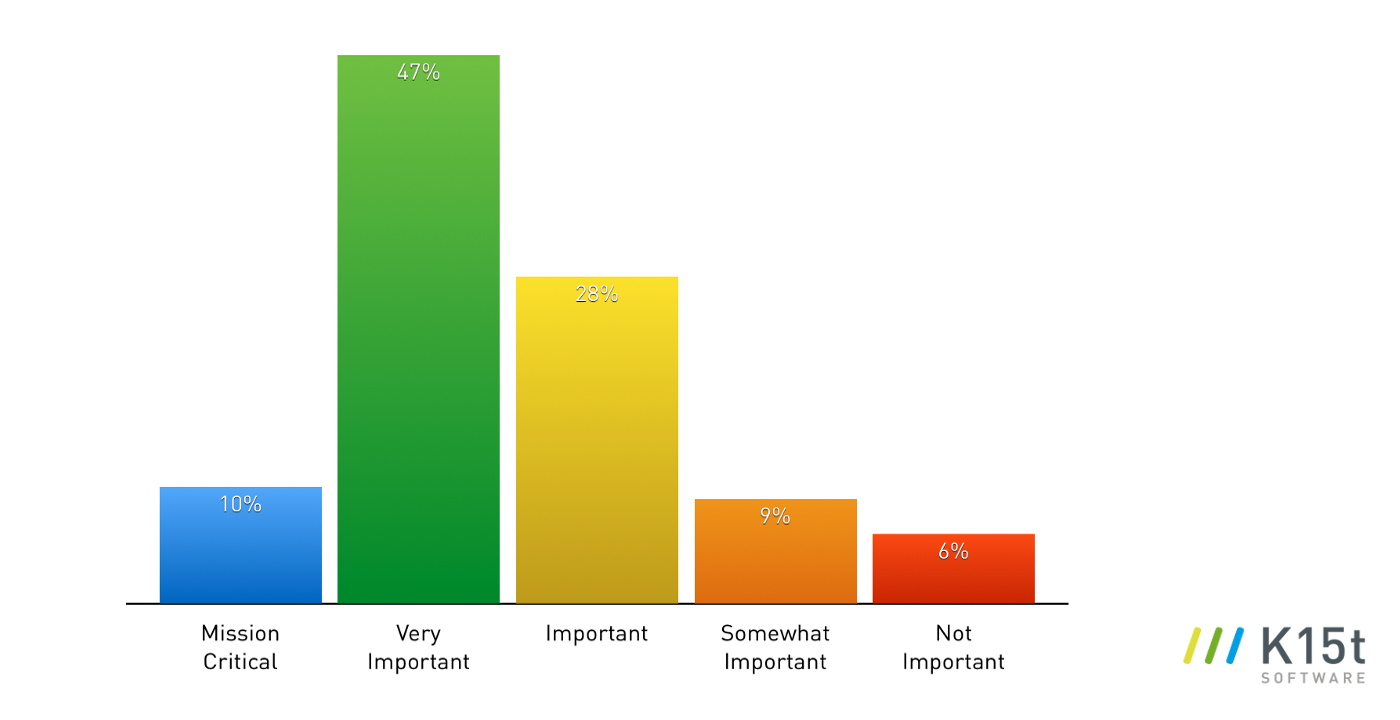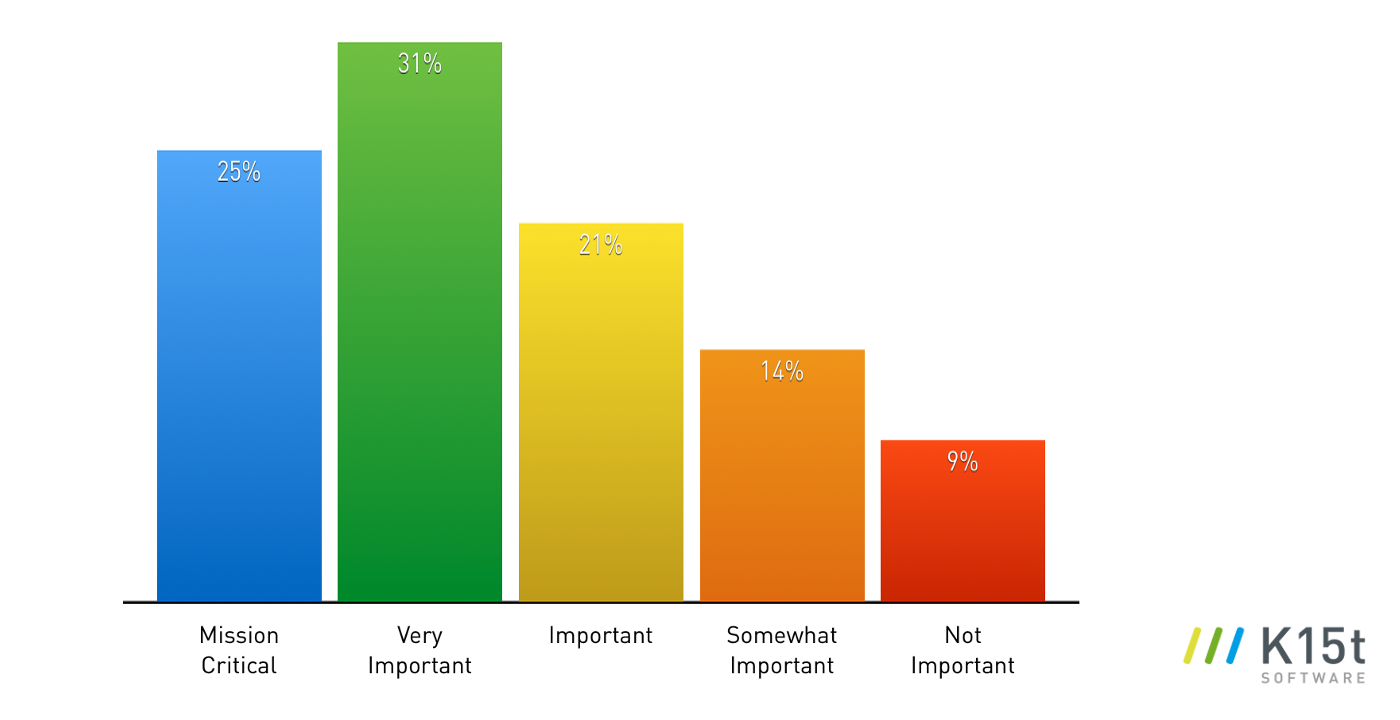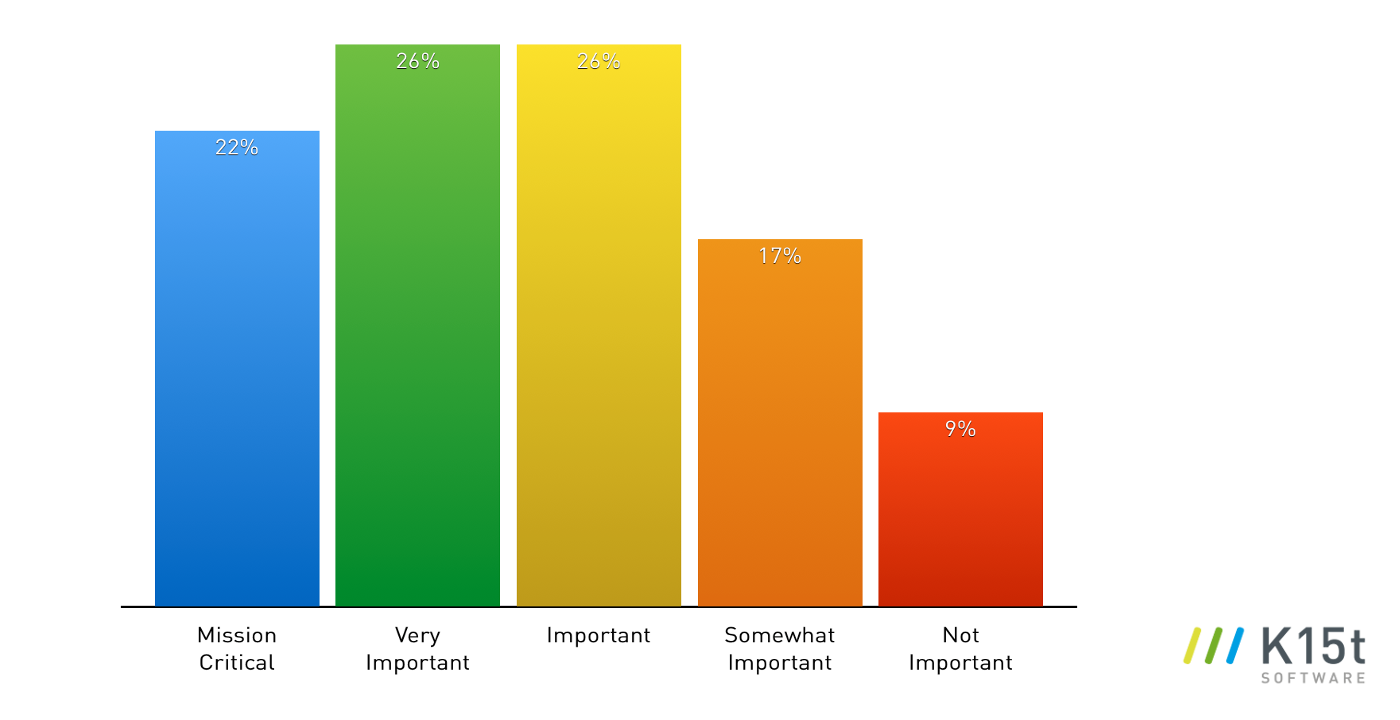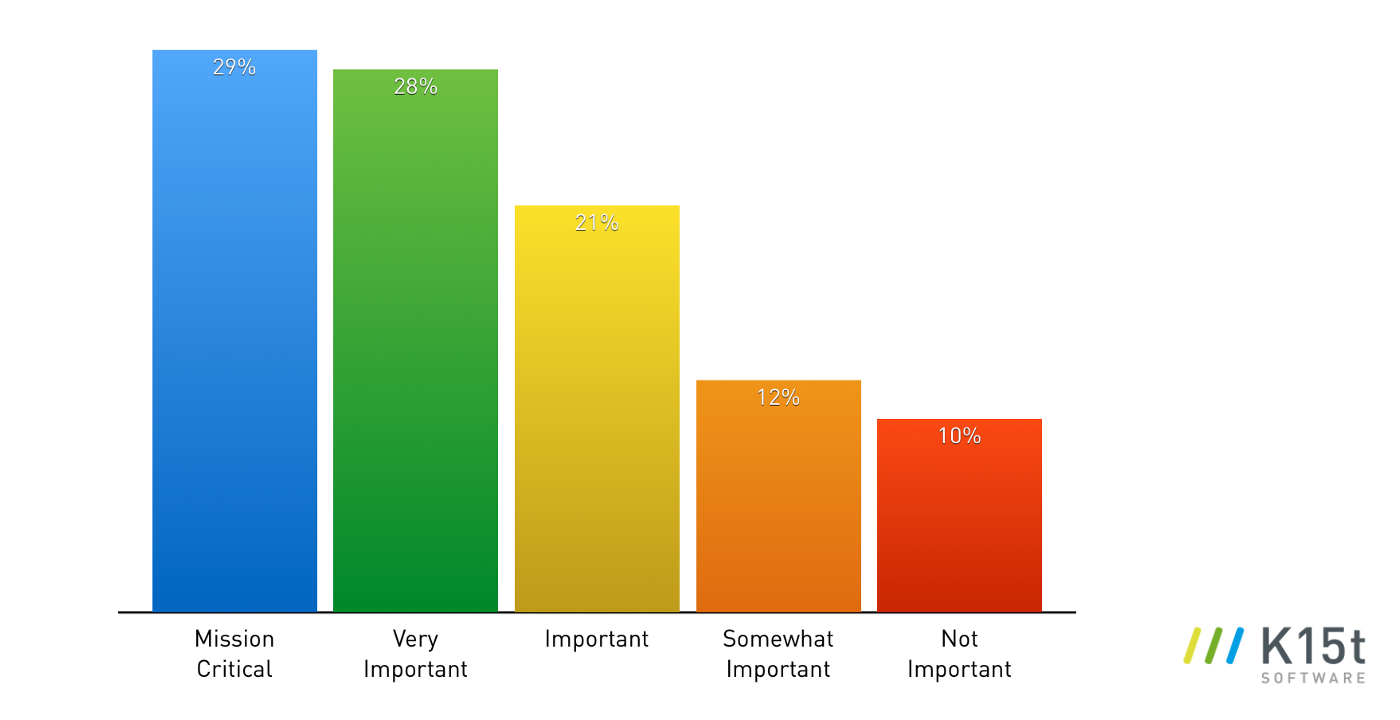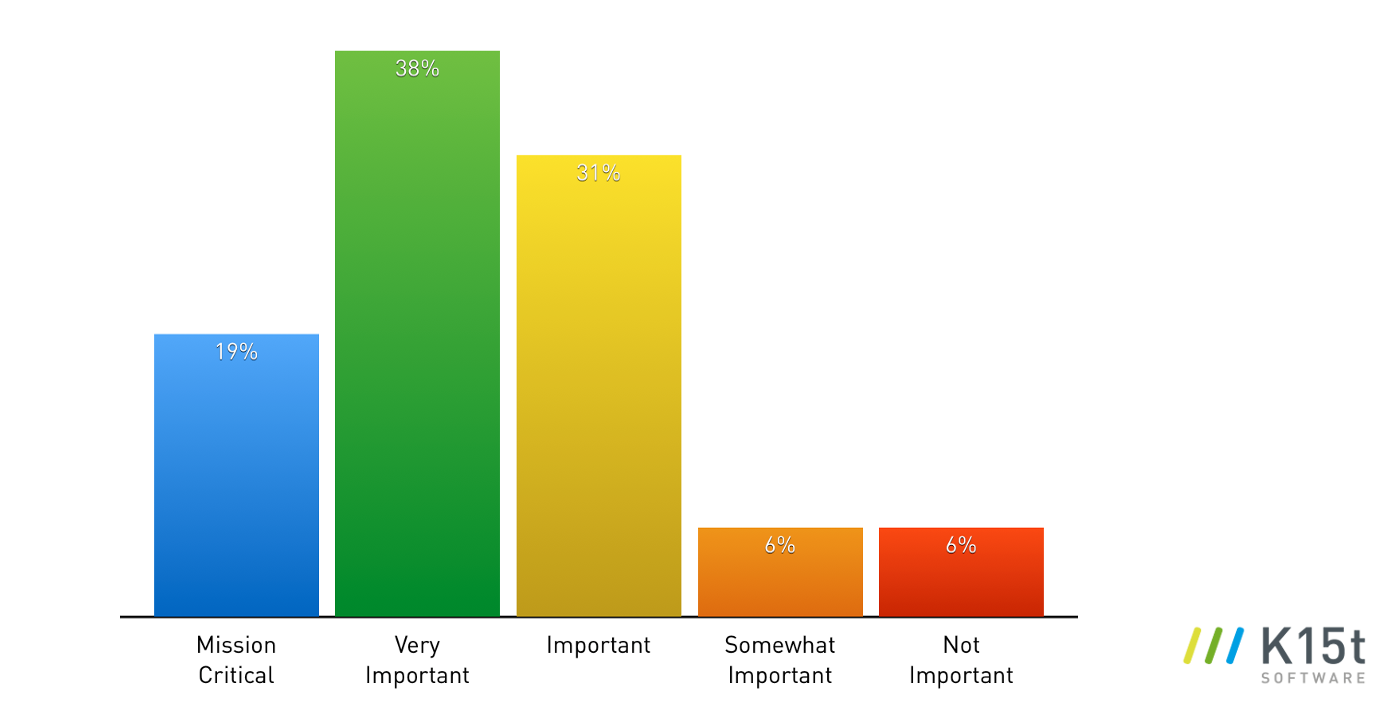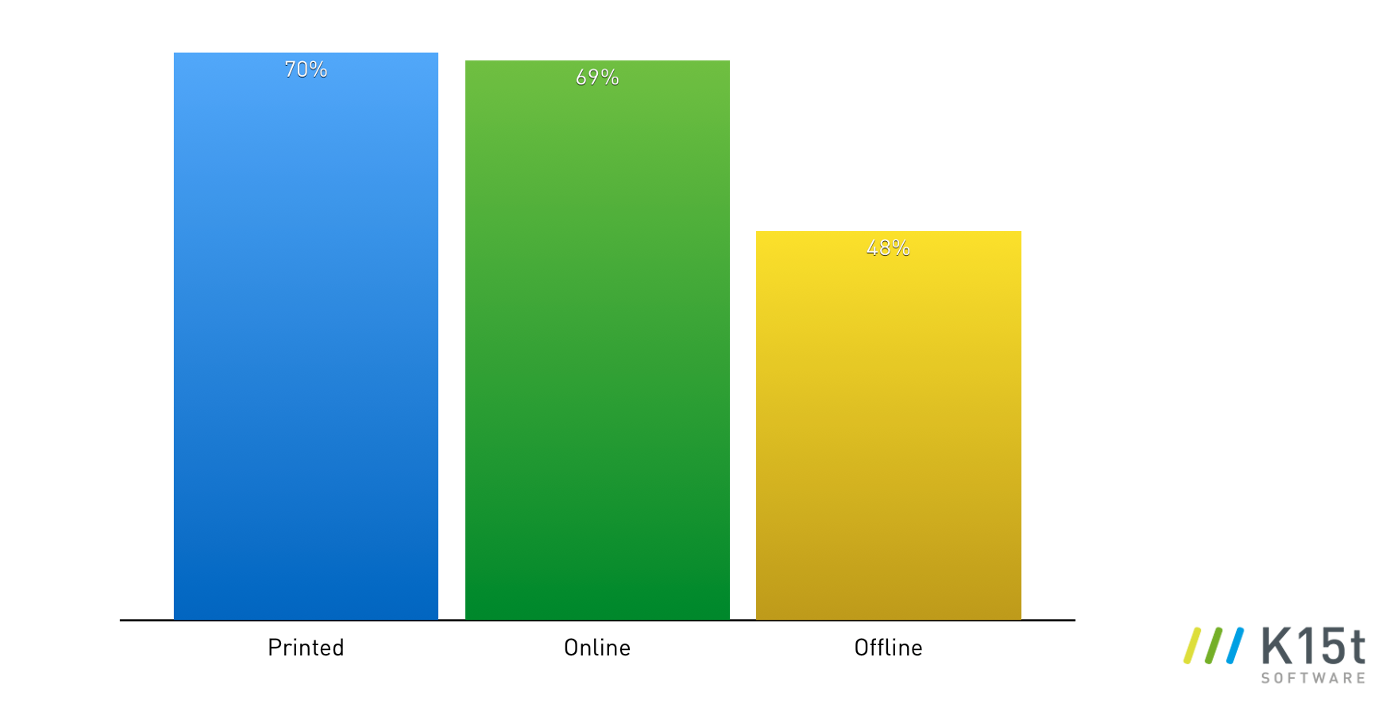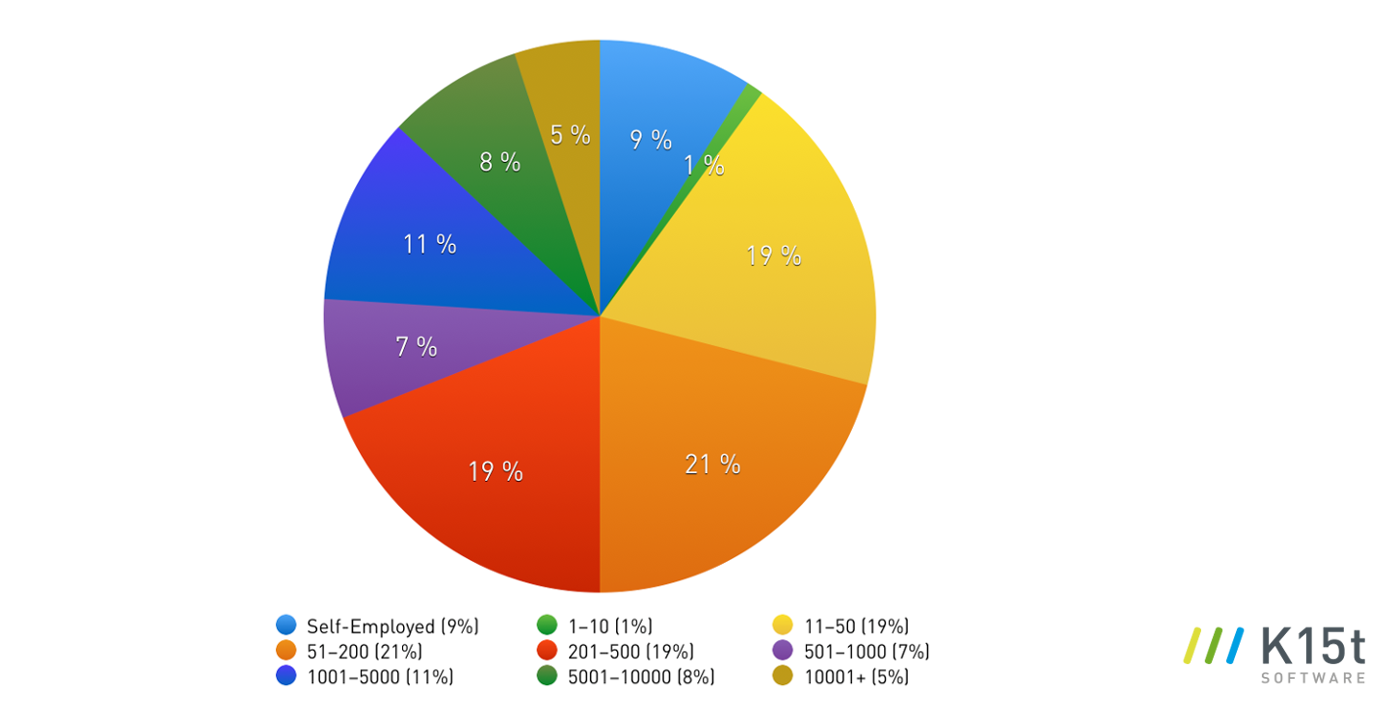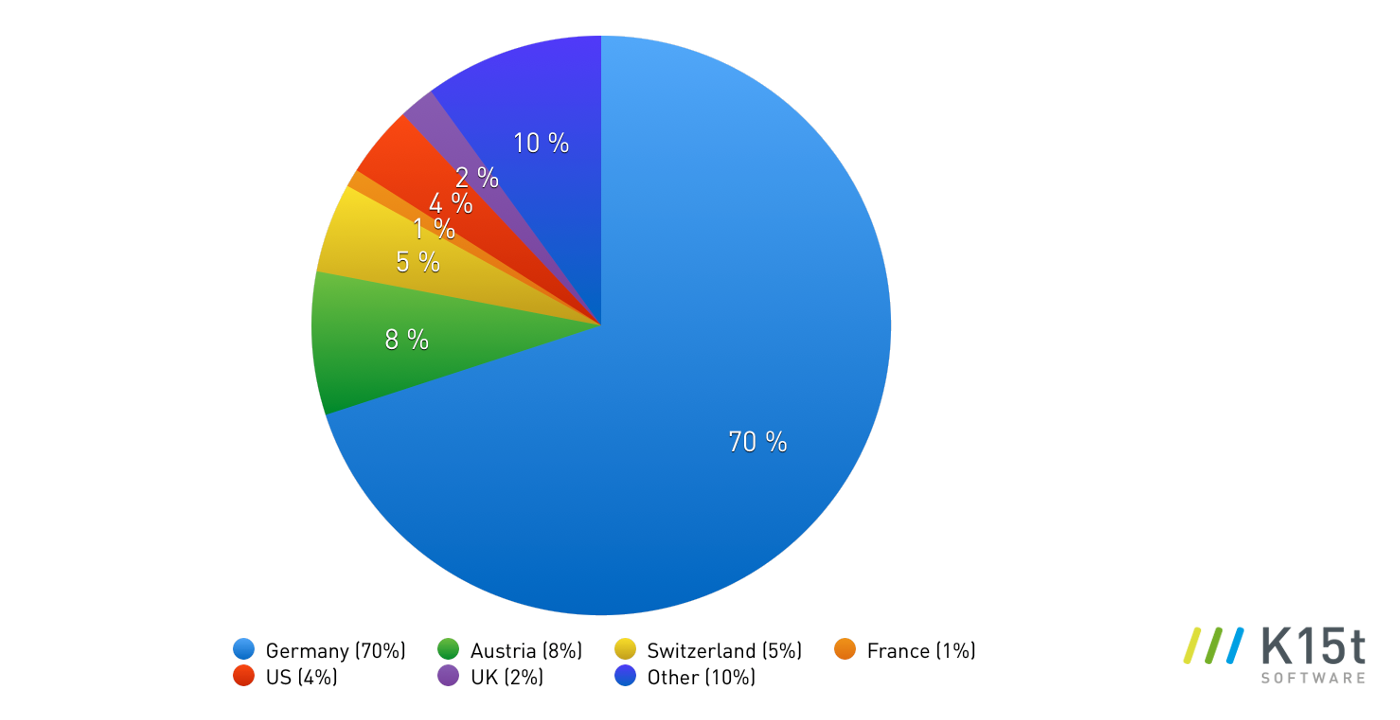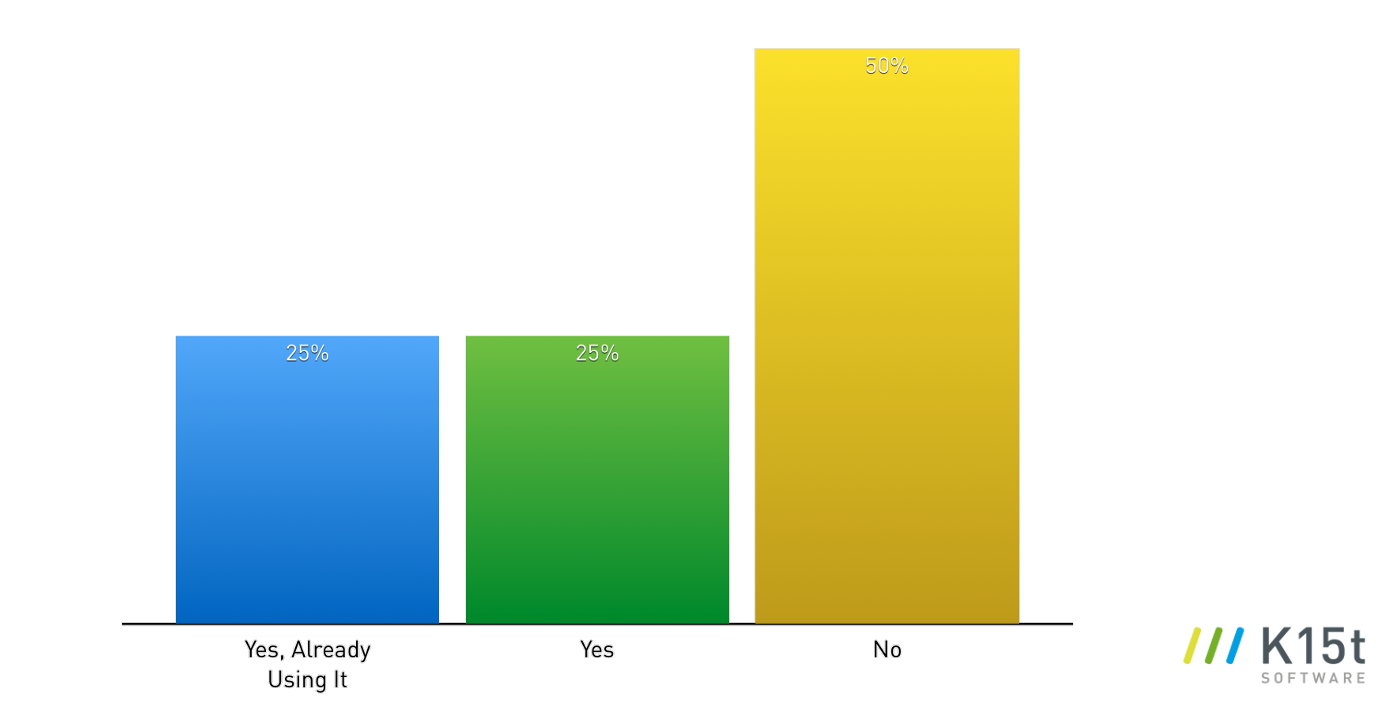What Authors Want: Authoring Tool Insights from Technical Communicators
What Authors Want: Authoring Tool Insights from Technical Communicators
With 4,200 participants from 48 countries, the tekom Jahrestagung (TCWorld Conference) is at the forefront of technical communication, and we're blessed to have it right in our home city of Stuttgart, Germany. We asked visitors to our booth at the conference this past November to take a short survey to help us gain more insight into what authoring tools they use, what they look for in their tools, how they make their documentation available, and more.
If you're like us, you're using these early days of 2016 to fine tune your plans for the new year. One such plan for K15t is our product development roadmap. Our findings from nearly 100 survey takers at tekom 2015 are helping us plan new features and functionality for our tools. Read on for the survey results.
What is your authoring tool?
We received a broad spectrum of answers to this question, but the clear winner here was Microsoft Word, preferred by a third of our respondents. MS Word has been a mainstay authoring tool for many years, and remains many authors' go-to program for composition. The other major tool choices were somewhat fractured, with many using Adobe products, Atlassian Confluence, and Madcap Flare. We love the simple-yet-powerful authoring functionality that Confluence offers, and when one considers the advantages of having a single source of truth and avoiding file shares and the pitfalls of emailing docs, we're happy to see usage growing among technical communicators.
Who contributes in your authoring environment?
We asked our visitors to check off every department that contributes in their authoring environment. Development was the primary contributor with 50%. The product management and service/support departments made up 33% and 31% respectively, with quality assurance and marketing/sales slightly behind at 26% and 23%. Contributors who fall into the 'other' category made up 35% with responses being widely varied. Collaborative contribution is one of the biggest challenges documentation professionals face, and the choice of a toolset that is geared not only toward authoring ease and efficiency but that also fosters collaboration across roles and departments can pay big dividends for technical communicators.
What requirements are most important in your authoring tool?
This question yielded particularly interesting information. What functionality do authors find indispensable, what is important but not critical, and what isn't especially useful for them? K15t Software provides solutions for expanding and enhancing Confluence's functionality, and these answers help us understand how to make our tools better for technical writers. We segmented this question into five categories: Collaboration, Versioning, Variants, Language Management and Workflows/QA.
Collaboration
For 47% of respondents, the ability to collaborate efficiently and effectively is a very important factor in their choice of authoring tool. For 10%, it's not only very important, it's mission critical, while 28% view it as important. A further 9% see it as somewhat important, and only 6% don't take collaboration into account when selecting an authoring tool. For environments where collaboration is key, we feel there's no better platform than Atlassian Confluence.
Versioning
As organizations operate, they accumulate large amounts of documentation, and much of it is updated and changed regularly. The ability to create – and maintain an overview of – versions can be decisive, and for one in four survey participants versioning is mission critical. A further 31% stated that it's very important, 21% regard it as important, and for 14%, it's only somewhat important. The remaining 9% don't require versioning capability in their authoring tool. The majority of respondents rely heavily on versioning functionality, and it's no surprise – without it, managing and updating documentation can quickly become both overwhelming and extremely time-consuming.
If you're looking for a way to manage versions in Confluence, look no further: K15t Software's Scroll Versions makes versioning a breeze. It offers powerful functionality for creating and managing versions and variants, setting editing permissions, publishing quickly and easily, and more. Click here to view a webinar showing how Scroll Versions simplifies versioning in Confluence.
Variants
Variants allow control over which content is displayed to a reader based on defined criteria. This is useful, for example, in displaying information relevant to a variant of a product a current viewer is interested in, without affecting the bulk of the content that is the same for all product variants. For 22% of our participants, variants are mission critical, and for over half variants are either important (26%) or very important (26%). They're somewhat important to 17%, and not important to 9%. Again, it's no surprise that variants are so important to so many respondents. The ability to deliver exactly the right content to exactly the right person enables documentation teams to keep themselves organized and keep their readers well-served.
Language Management
The globalization of business means that the ability to communicate effectively with customers around the world is more crucial than ever. This is apparent in the results of our Language Management question; the vast majority of people surveyed cited language management as either mission critical (29%), very important (28%) or important (21%). It's still somewhat important for another 12%, and only 10% don't see it as important. Of course, this largely depends on both the internal operations and the target market of a business – if a business is based in France, only works in French, and is aimed solely at French customers, language management is not nearly as important as it is for a company whose business activities span the globe and must be conducted in a number of languages.
Parlez vous Francais? Sprechen Sie Deutsch? K15t Software's Scroll Translations helps you manage and deliver your Confluence content to a global audience. Manage your documentation in multiple languages in a single space and have the ability to translate content directly in Confluence, or integrate with external translation memory systems.
Workflows / Quality Assurance
When selecting their authoring tool, most respondents weigh heavily whether it can can easily be used in their workflows and quality assurance processes. 19% regard this as mission critical, while it is very important (38%) or important (31%) for over two thirds of those surveyed. Just over one in ten consider workflows and quality assurance somewhat important (6%) or not important (6%). This is very much in line with expectations based on the size of the companies whose representatives we surveyed (more on this below). Self-employed technical writers are their own quality assurance department, so QA workflows are not a big consideration for them when selecting an authoring tool. For the vast majority of writers though, this functionality is critical.
How do you make your documentation available?
We asked our respondents how they make their documentation accessible to readers: in print, online or in an offline digital format. 70% still print out their documentation and make it available that way, while 69% make it available online. Just under half of visitors surveyed make their documentation available in an offline digital format (48%). Each approach has pros and cons. Print can be required by external stakeholders or processes, is easy to read, and remains popular. Very nearly as many respondents also have their documentation available online, which allows everyone access and search it but can be problematic when network connectivity is hard to come by. Offline digital formats solve this problem, and do away with the need to print and carry documents, but the loading and updating of files onto a reader's device must be dealt with.
What is the size of your company?
Context is king, and the above responses were undoubtedly influenced by the size of the respondents' organizations. We wanted to have insight into these company sizes in order to frame our information. The results show three dominant tiers. 21% have between 51 and 200 employees, while companies with 11–50 employees and 201–500 employees each make up 19% of those surveyed. Companies with 1001–5000 people make up 11%, while 9% of respondents are self-employed. 8% have 5001–10000 employees, and 7% have a tenth of that with 501–1000. Very large companies with over 10000 people comprised 5% of our respondents, and only 1% have between 1 and 10 employees.
This means that 69% of our results stem from organizations with 1–500 employees, and approximately 31% from larger enterprises.
Where is your company based?
The majority of those who visited our booth and participated in our survey at tekom are based in Germany (70%), as is to be expected at a conference located here. The others are based in Austria (8%), Switzerland (5%), France (1%), the US (4%) and UK (2%). Of the remaining 10% who answered 'other', the most common locations were the Netherlands and Croatia.
Are you familiar with Atlassian Confluence?
As makers of the Scroll Add-ons for collaborative documentation and content management in Atlassian Confluence, we at K15t Software are always interested in finding out how many companies are upping their authoring and collaboration game and using the platform. We found that half of our respondents are not yet familiar with Confluence, while a quarter are familiar with it but are not yet users. The remaining 25% are not only familiar with Atlassian Confluence, they're already leveraging it to enhance their companies' collaboration capabilities.
Takeaways
The most popular authoring tool among technical communicators remains Microsoft Word, but Atlassian Confluence is also well represented and gaining ground. Those contributing in the authoring environment are primarily the users responsible for documentation, technical communicators and others, though all departments represented in our answers contribute at least 20% of the time.
Authors place great emphasis on functionality that makes their lives easier when writing and managing their documentation. Whether their particular use case requires efficient collaboration, powerful versioning and variant control, smooth integration into their workflows and QA, or the ability to handle multiple languages with ease – writers want a tool that makes their work more effective and fluid, both during the authoring process, and beyond it. Most organizations still provide their documentation in hard copy, but nearly the same amount also make it available online. Print is far from dead, but as businesses become increasingly digitized, more and more companies will focus on online authoring, collaboration, and documentation. Nearly half of visitors surveyed export their documentation into offline digital formats, which is ideal for situations where network connectivity can be a problem, such as mobile users who need their documentation reliably available anywhere but don't want to carry printed documents with them.
The size of the companies we surveyed was concentrated between 11 and 500 employees, but the responses came from a wide range, from self-employed writers to companies with upwards of 10000 employees. Most participants' businesses are based in Germany, and the majority of the remainder are located in neighboring countries. A handful represented companies based overseas in the US. Finally, we found that there is still a large proportion of companies who are either not at all familiar with Confluence or haven't yet opted to leverage it to overcome their challenges.
We feel these latter companies are missing out on the best platform available for authoring, managing, and publishing content in a modern way. If you are curious as to how and why Confluence works so well for technical documentation and other content-based use cases, don't hesitate to contact us.
